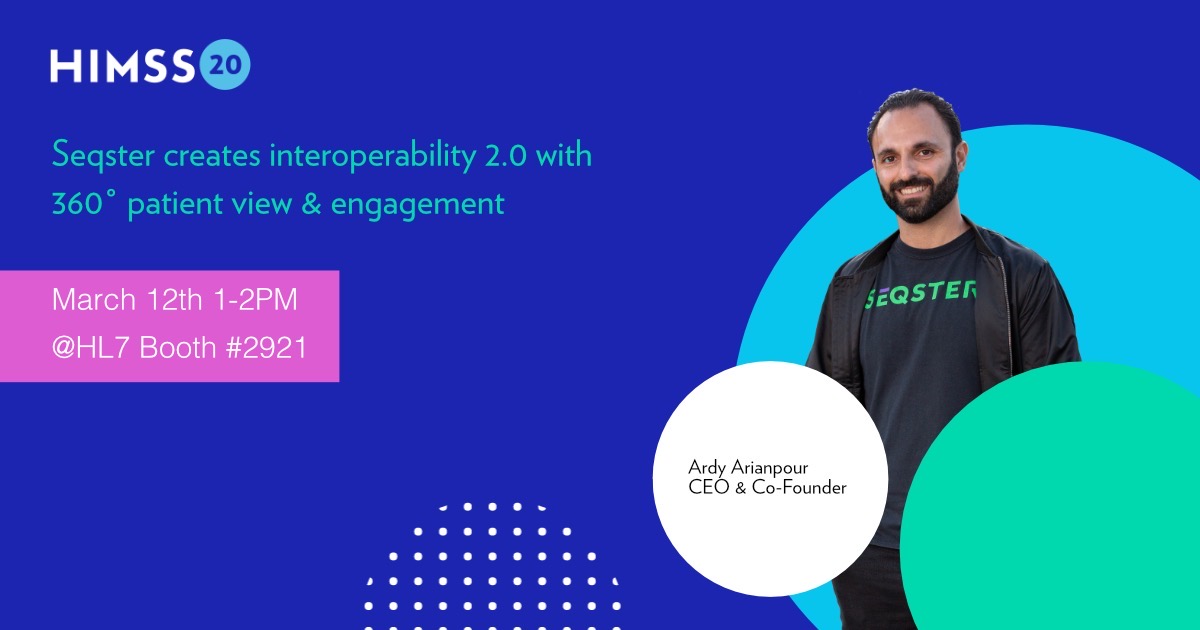
Seqster has developed a platform that allows patients and their caregivers to collect, visualize, manage and share all of their health data in one app. We aggregate clinical data points across providers chronologically using the industry-standard coding systems that the HL7 community knows all too well.
Seqster provides an intuitive, detailed health journey helping patients visualize their medical history. The health journey displays in-depth clinical summaries and physician's notes from medical offices, hospital visits and physician encounters intuitively, letting the user, their caregiver or their medical care team get an overview of their health across time. We are the first company to offer this level of interoperability directly to patients.
Seqster helps patients access and understand their health data. But this story isn’t just about Seqster. It’s about the collective responsibility of health IT engineers, data scientists and policymakers to provide patients with the data they need to manage their own health. The prevailing implication of interoperability emphasizing “provider to provider” or “provider to payer” is already changing with ONC’s new interoperability guideline which states that “The proposed rule places a strong focus on a patient's ability to access their health information through a provision requiring that patients can electronically access all of their EHI (structured and/or unstructured) at no cost.” The time has come for all of us to embrace a new paradigm: “provider to everyone” with the patient at the center.
With the patient now able to connect all of their clinical data, genetic and device data through the Seqster technology, it is now possible to display disparate clinical diagnostic results and vital signs in a longitudinal timeline harmonized across multiple providers. C-CDAs and HL7 FHIR1 provide both the value and the normal range of these measurements, enabling us to inform patients when their test results go out of normal range both visually on our dashboard and through notifications. We hear from many of our users that they found abnormal indicators, about which they were not previously advised. They were able to discuss these observations with health advocates and family members from the comfort of their homes. Lastly, when they contacted their providers and provided this information, they were given actionable instructions to help them get healthier.
We have learned two things from this feedback:
- Patients are going to monitor, learn from and share their data when it’s presented in a more intuitive and timely manner.
- We are guaranteed to underestimate how this wave of data accessibility will impact the way patients and their caregivers adapt their behaviors to improve their health conditions and lower their risks.
Through a patient-mediated process, Seqster collects health data from a variety of sources. We live through the reality of knowing that most EHR vendors or providers are not offering FHIR access directly to consumers. There is no simple process to reach out to providers for access to their public FHIR APIs. I think it’s important for our community to understand that this is the current situation and we fully support ONC’s effort to promote a policy that opens the door toward their own mandate for “A strong focus on a patient's ability to access their health information.”
We understand the benefits of FHIR standards and the efforts of EHR vendors to comply with them. But we also understand their shortcomings in terms of completeness, accuracy and consistency as well as how these can affect the way that patients, caregivers, health advocates and in some cases, referred physicians, will interpret their data. Seqster and our colleagues in the patient-centric app market need the entire community’s support in advocating for the ONC to institute new policies to make patient data as complete as possible for machine readability.
Frequently, patients with serious illnesses that use Seqster desperately need to navigate the healthcare system to receive the best care they can find. Access to medical records from apps through FHIR should be as easy for patients as it is for providers. App developers that can demonstrate HIPAA compliance on HiTrust2-certified platforms should be trusted like any covered entity. We’re all interested in the same thing — helping patients improve their health.
A few weeks ago, Seqster participated in the IHE North America Connectathon. We were the only company in attendance offering a patient or consumer-centric product. The Connectathon allows engineers working for hundreds of health IT and medical device vendors to come together and verify each other’s compliance with data standards like FHIR R4. But it also allows technologists to network, find commonality and help advance the state of the art in health data interoperability. We had the opportunity to collaborate with engineers from several EHR, portal and FHIR tool vendors. We were welcomed by the IHE staff as a pioneer in this emerging patient-centric market.to institute new policies to make patient data as complete as possible for machine readability.
At one time or another, we are all patients and we’re all seeking health data and knowledge. Precision medicine will not just involve a patient’s data from the perspective of the provider. Seqster’s mission is to create a world where patients are directly engaged in observing, monitoring and acting on their health data. If you are seeking data, you’re a Seqster.
1FHIR® is the registered trademark of HL7 and is used with the permission of HL7
2HITRUST is a registered trademark of HITRUST Alliance


